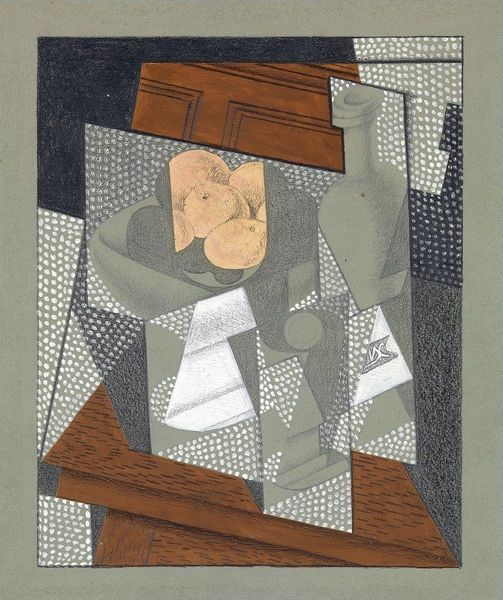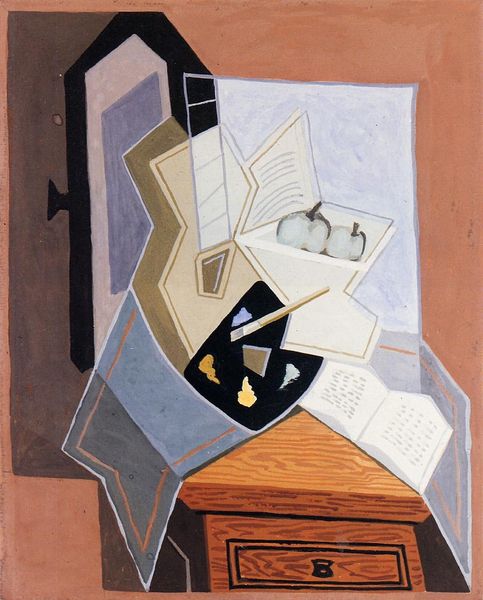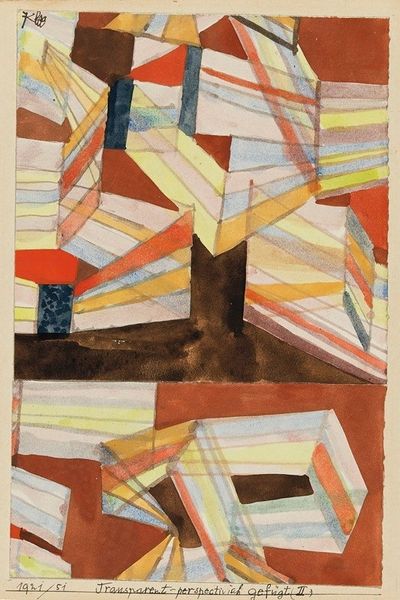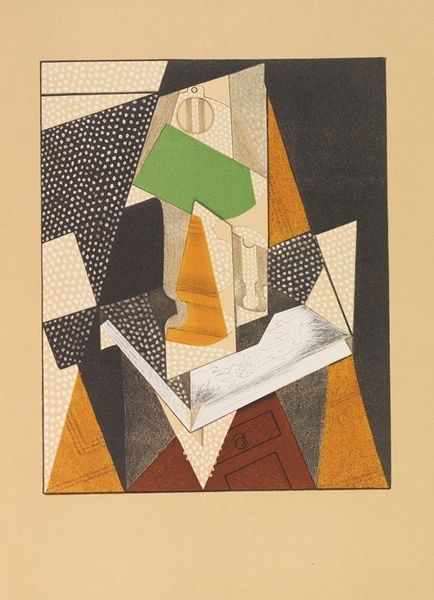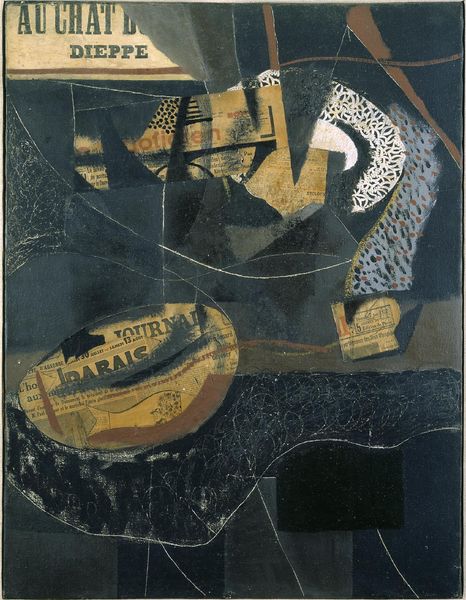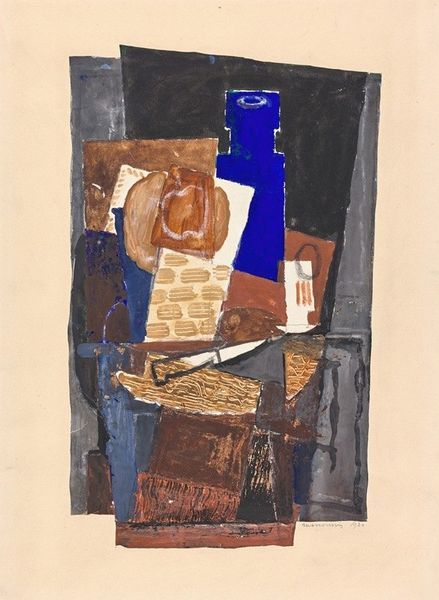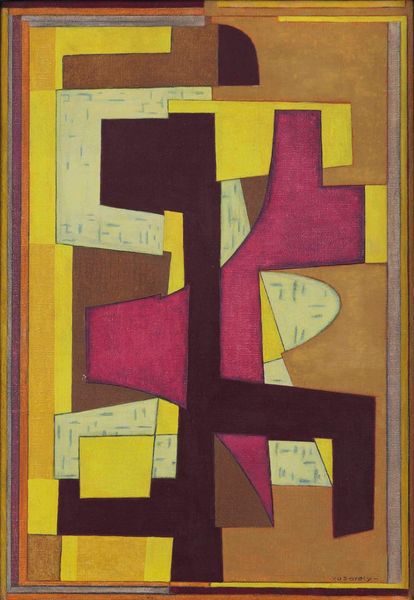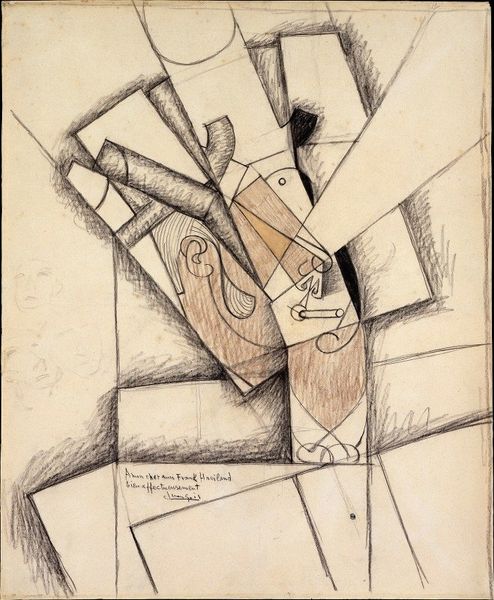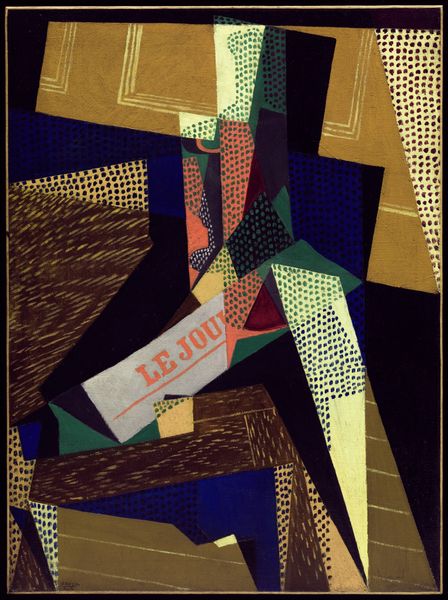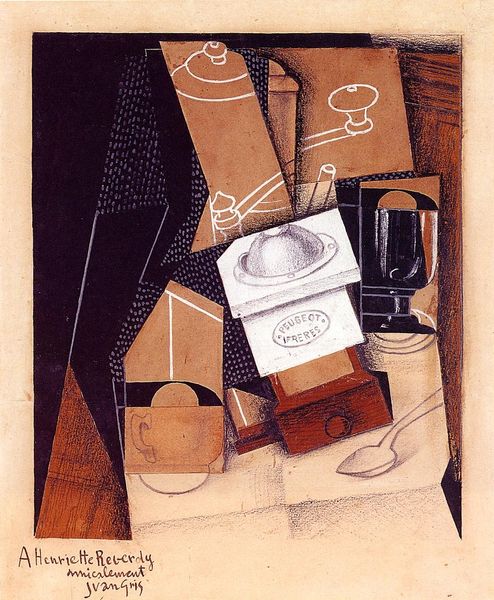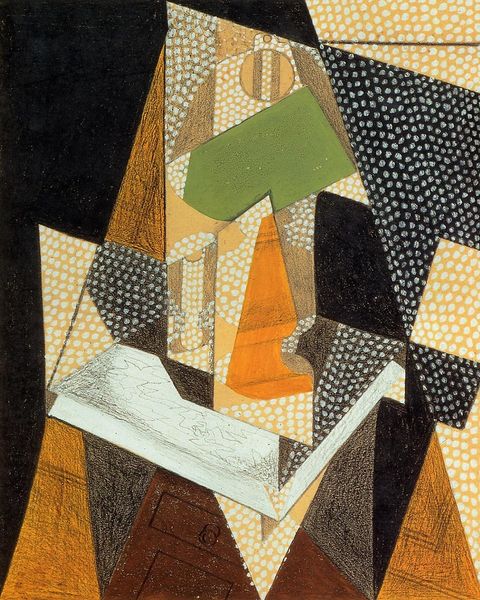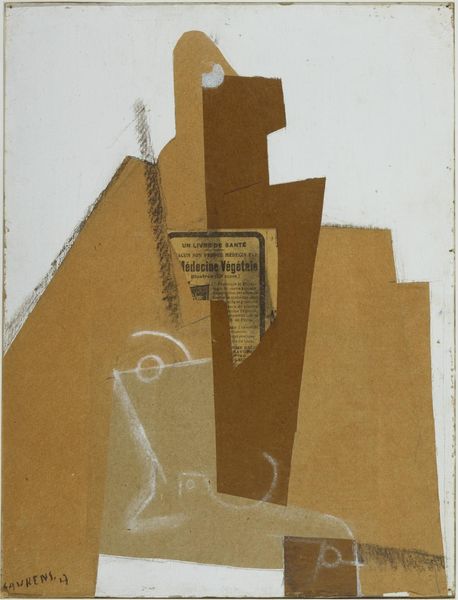
drawing, paper
#
drawing
#
cubism
#
paper
#
geometric
#
line
Copyright: Public domain
Curator: So, here we have “Bottle,” a drawing on paper by Juan Gris. Editor: Right away, I’m seeing playful deconstruction. The eye jumps all over the place—nothing's quite where you expect it, but somehow, it still feels balanced. It's as if he's built it from fragments of reality. Curator: Indeed. Gris worked in the Cubist style, a movement concerned with breaking down objects into geometric forms and representing them from multiple viewpoints simultaneously. He, along with Picasso and Braque, were major figures in developing this style. The composition, using line drawings with some washes, exemplifies analytic cubism. Editor: The linework is so precise! But, even with these hard edges, the piece still has a warm, inviting feeling. The woodgrain textures make you want to reach out and touch the piece, which feels very clever since this is, in reality, an illusion. The color palette seems earthy with moments of inky darkness. It’s both cozy and intellectually stimulating, a rare pairing, wouldn’t you say? Curator: Absolutely. Gris sought to depict objects not as they appeared, but as they were known to be in their totality. Take, for instance, the bottle—fragments of the container repeat at odd angles. The overlaid planes invite the viewer to actively reconstruct the form within their mind. Editor: Look closely. Newspaper scraps in French offer tiny glimpses of the outside world that has become interwoven with domestic, quieter pleasures, eh? Perhaps it means to suggest the mind’s eye and all the places it roams to at once! Curator: You know, he's subtly hinting at the interplay between representation and reality. It’s a profound statement about how we perceive and interpret our environment. Editor: So it is. Seeing this "Bottle", I find myself craving that quiet moment with a simple form, surrounded by bits of news, the past and the future collapsing in one singular frame. Curator: Well, it just goes to show how potent symbolism, even in abstraction, is for revealing our cognitive makeup and cultural history. Editor: Totally! It proves a clever artist knows how to both dismantle and reconnect.
Comments
No comments
Be the first to comment and join the conversation on the ultimate creative platform.
